| Home | About EBG | Countries | Events | Holidays | News | Requests | Species | Contacts & Links | |
 Requests RequestsPlease contact European Butterflies Group if you would like to make a request of European Butterflies Group members. New European butterfly Red List
- final images request from Sam Ellis. Board Member Butterfly
Conservation Europe & EBG Committee Member.
Over the last couple of years, Chris van Swaay, Martin Warren and Sam Ellis have been working with IUCN to produce a new European butterfly Red List to be published later in 2024. They aim to illustrate the assessments on the IUCN website with images of all the European butterfly species. If you are able to assist then please contact Sam: sam.ellis@bceurope.eu. So far they collated photographs of over 480 butterflies but images are needed for a small number of species, these are listed . Request posted May 2024 Survey assistance request
from Mike Prentice, EBG Chair.
Danube Clouded Yellow surveys in Romania in 2024 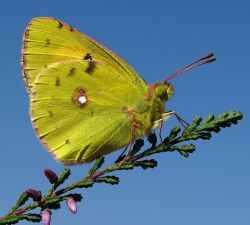 You
may have seen the article in the latest EBG Newsletter about the
surveys that 2 teams undertook in Romania in May/June and
August/September 2023. The Danube Clouded Yellow Colias myrmidone
was once widespread in central and eastern Europe but is now classified
as Vulnerable and can now only be found in any reasonable numbers in
Romania and areas further east such as Belarus and Ukraine. We have
been working for many years with colleagues in Germany and Romania to
survey known myrmidone sites and ,more particularly, to search for new
sites. Our surveys in 2023 found some new sites with healthy
populations and we will be exploring further areas in northern
Transylvania in 2024. You
may have seen the article in the latest EBG Newsletter about the
surveys that 2 teams undertook in Romania in May/June and
August/September 2023. The Danube Clouded Yellow Colias myrmidone
was once widespread in central and eastern Europe but is now classified
as Vulnerable and can now only be found in any reasonable numbers in
Romania and areas further east such as Belarus and Ukraine. We have
been working for many years with colleagues in Germany and Romania to
survey known myrmidone sites and ,more particularly, to search for new
sites. Our surveys in 2023 found some new sites with healthy
populations and we will be exploring further areas in northern
Transylvania in 2024. Once again we plan to make two survey visits and although the exact dates have yet to be finalised the first will be from around 25 May for about 9 or 10 days and the second in early August for a similar duration. Romania is a country where agriculture is still practiced extensively and it has a butterfly fauna of just under 200 species. As well as looking for Colias myrmidone there will be time on both trips for finding other interesting species. As examples, the early trip in 2023 yielded sightings of Spinose Skipper Muschampia cribrellum, Assman’s Fritillary Melitaea britomartis and Scarce Fritillary Euphydryas maturna and on the later trip there is a chance to see Pallas’s Fritillary Argynnis laodice, Sudeten Ringlet Erebia sudetica and perhaps Violet Copper Lycaena helle. Fenton’s Wood White Leptidea morsei was seen on both trips. The hotel base for both survey trips will be near Cluj-Napoca although on the later trip it is likely that we will also visit areas further south to look for mountain species. If you are interested in taking part in either survey please email Mike Prentice mikeprentice7@gmail.com by 7 February and he will update you as more definite plans are finalised. The surveys are not particularly arduous although there is some walking on hilly and occasionally rough terrain. Request updated January 2024 Request by Butterfly Conservation
Europe for macro-moth photos for the European Red List of
macro-moths
 Colleagues at Butterfly Conservation Europe (BCE) are working on the first ever European Red List of the macro-moths. Each species needs a photo and whilst they have photos of the British and common European species there is a large number for which they have no photos. If you think you may be able to help please contact Mike Prentice who can supply a spreadsheet of the species for which photos are needed. Request posted December 2022 A pan-European
citizen science project, investigating the migration of the Red Admiral
- Vanessa atalanta
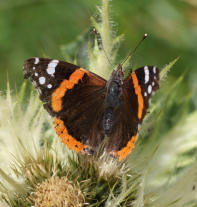 A
request from the University of Bern, Switzerland, Institute
of
Ecology and Evolution, Insect Migration and Ecology Lab. for Red
Admiral sightings. A
request from the University of Bern, Switzerland, Institute
of
Ecology and Evolution, Insect Migration and Ecology Lab. for Red
Admiral sightings. We have been contacted by Marco Thoma from the University, requesting records for this species, to help with the study of Red Admiral migration across Europe. Records can be submitted via the country portal, details can be found on the link below, e.g. Butterfly Conservation in the UK. Alternatively by a mobile app such as 'NaturaList', or 'ObsMapp' for Android, or 'iObs' for iPhone. Read more here: https://insectmigration.wordpress.com/red-admiral-migration/ News Release (PDF) Request posted April 2017 Survey assistance request
from Sam Ellis, EBG Committee Member
Nevada Grayling Surveys in southern Spain 2024. 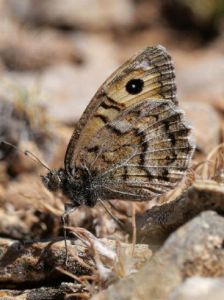 You might have read Dave Plowman’s
article in EBG’s Newsletter 34 about the Nevada Grayling Pseudochazara williamsi
surveys that were undertaken in Andalusia in July 2023. This butterfly
is one of Europe’s most Critically Endangered butterflies, reduced to a
handful of occupied sites and having disappeared from many more in
recent times. The team of eight members recorded the butterfly on only
two sites, though Spanish colleagues found it on a few others preceding
and following the EBG survey. Our Spanish colleagues were very
complimentary about the fantastic effort made by EBG members who
participated in the survey and are keen to welcome us back in 2024 to
resurvey known, former and potential sites. You might have read Dave Plowman’s
article in EBG’s Newsletter 34 about the Nevada Grayling Pseudochazara williamsi
surveys that were undertaken in Andalusia in July 2023. This butterfly
is one of Europe’s most Critically Endangered butterflies, reduced to a
handful of occupied sites and having disappeared from many more in
recent times. The team of eight members recorded the butterfly on only
two sites, though Spanish colleagues found it on a few others preceding
and following the EBG survey. Our Spanish colleagues were very
complimentary about the fantastic effort made by EBG members who
participated in the survey and are keen to welcome us back in 2024 to
resurvey known, former and potential sites. As well as the Nevada Grayling there is a good chance of seeing other endemic species such as Zullich’s Blue Agriades zullichi, Spanish Argus Aricia morronensis, Spanish Brassy Ringlet Erebia hispania, Andalusian Anomalous Blue Polyommatus violetae and Nevada Blue Polyommatus golgus. The exact dates of the 2024 survey remain to be fixed but it is likely to be between 12th and 22nd July. Depending on how many people are interested we may stagger the surveys so no one needs to commit for the full period. If you are interested in taking part in the 2024 survey, please email Sam Ellis sam.ellis@bceurope.eu by Tuesday 6th February 2024 and he will keep you informed as the survey plans develop. Please be aware that the surveys will be undertaken across a wide area and to maximise time participants will need to stay in several hotels. All the sites are at high altitude and whilst they can be partly accessed by vehicle, the surveys will involve walking in mountainous terrain and very probably in hot conditions. It's therefore important you feel you are physically fit enough and in sufficiently good health to survey under these conditions. Request posted January 2024 Following on from the request for
collaboration from the Conservatiore d'espaces naturels, the Atlas des
papillons de jour d'Aquitaine, Biotope editions, was published in
September 2022
 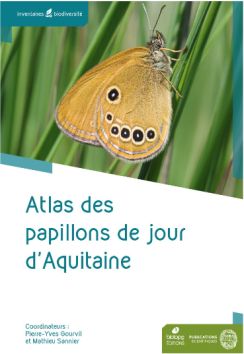 The book starts with an introduction to butterflies, their observation and identification, the history of butterfly studies in Aquitaine, local habitats, butterfly conservation in Aquitaine and finally the methodology and results of the atlas project. The monographs (include English names) take up the vast majority of the book. They focus on each species' caterpillar host plants, ecology, biology, distribution, flight period, together with an historical analysis, species status, threats and conservation information. Each monograph is illustrated with photos, a distribution map and flight period graph. The atlas is co-edited by the scientific publications of the MNHN (National Museum of Natural History) Price 35€ plus p+p. Paperback, 464 pages. Text in French. For more information and to order see here: https://leclub-biotope.com/en/naturalist-bookstore/1742-atlas-des-papillons-de-jour-d-aquitaine Many thanks to European Butterflies Group members who have contributed to this Atlas. Post updated November 2022 Red List for the
Lepidoptera of Corsica - IUCN Regional Red List published 2017
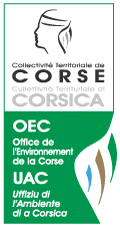 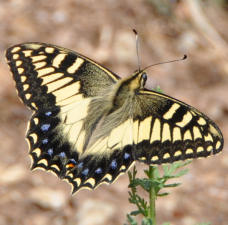 Following on from the request of February 2016 from our partner Marie-C cile Ruiz of the Corsican Environment Office (OEC-OCIC) for information and records on the distribution of Corsican Lepidoptera, we are pleased to say that the IUCN Regional Red List was published in 2017, and can be consulted here Guide photographique des papillons
de jour et zyg nes de France.
Hentz, Jean-Laurent, Dhondt, Jean-Pierre & Dauguet, Philippe (2022) Gard Nature. 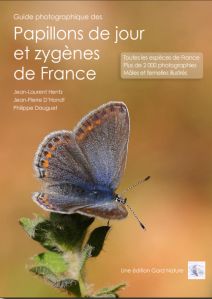 This book is a photographic
guide to the butterflies, burnet and forester moths of France. This book is a photographic
guide to the butterflies, burnet and forester moths of France.The book has two main sections, the identification keys and the species monographs. 297 species are described in the book, with images of both upper and undersides of all male and female species to be found in mainland France. Three species identification keys are proposed, a new "classic" determination key using both the upper and underside. A second key, using the upper side and a third key using the underside, aim to show how far one can progress with an identification when there is just a photograph of the species with the wings either open or closed. The monographs are the main section of the book, each monograph comprises the scientific name and family, French and English vernacular names, a reference to the main identification key, 5 photographs, with a succinct text of the main id criteria which are also indicated on the photos, a small distribution map for France, flight period, the number of generations and the species status where applicable. The book is a result of a collective involvement of more than 100 participants. Format 15 x 21cm, 512 pages, price 35€ plus postage, text in French. For more information, to view sample pages and to order a copy of the book, please consult the Gard Nature website, see here: http://gard-nature.com/wp-content/uploads/2022/09/2022_commande_papillons_de_france.pdf Many thanks to EBG members who have participated in this project. Request updated November 2022 Regional Butterfly
Atlas for Provence-Alpes-C te d'Azur. France.
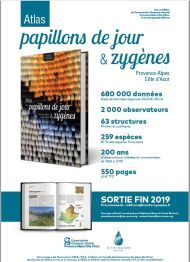 Atlas
papillons de jour & zyg nes Provence-Alpes C te d'Azur France.
(Butterfly atlas for the region Provence-Alpes-C te d’Azur) Atlas
papillons de jour & zyg nes Provence-Alpes C te d'Azur France.
(Butterfly atlas for the region Provence-Alpes-C te d’Azur)The PACA region encompasses six departments in Southeastern France: Alpes-de-Haute-Provence, Alpes-Maritimes, Bouches-du-Rh ne, Hautes-Alpes, Var and Vaucluse. The Provence-Alpes C te d'Azur region hosts an exceptional biodiversity of species, the atlas comprises 680,000 records, covering 260 species (87% of species in France) for the period 1834–2019. The Atlas is available to order from "le Naturographe" price 49€ plus postage 13€ to the UK or Europe. Payment by PayPal in euros. 550 pages, hardback, in French. For further information, sample pages and to order, see here: https://www.naturographe-editions.fr/ You can watch the presentation video, which is subtitled in English, on YouTube: https://youtu.be/4SSQYpbFwLk Many thanks to all members who have contributed to this Atlas. This is a continuing online project, which is coordinated by the European Butterflies Group partner St phane Bence from the Conservatoire d'espaces naturels PACA. St phane and his colleague Sonia, will always be be delighted to receive your records. Records can also be uploaded directly to the Silene database : https://silene.eu/contribuer/ Request updated March 2020 |
| Top of Page |